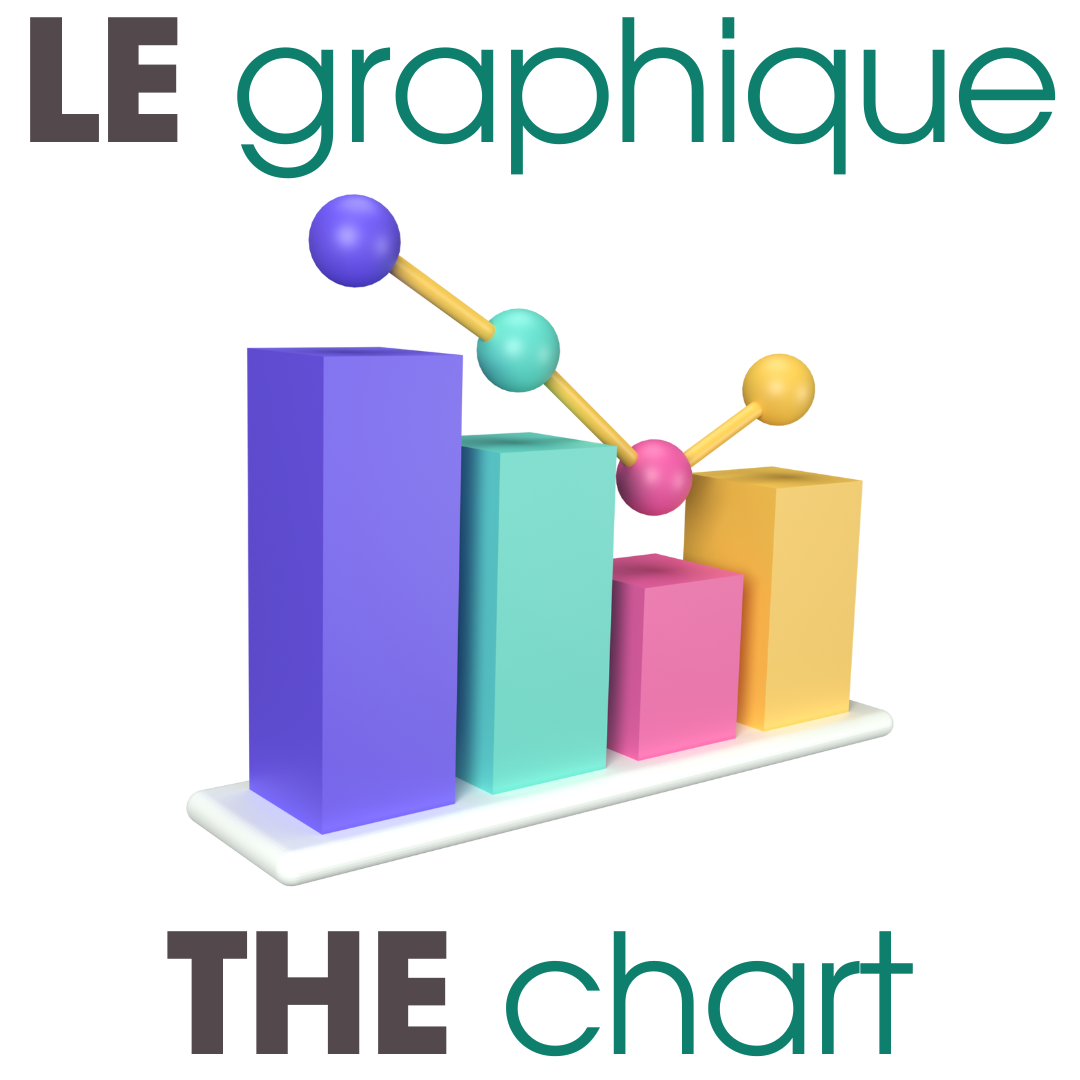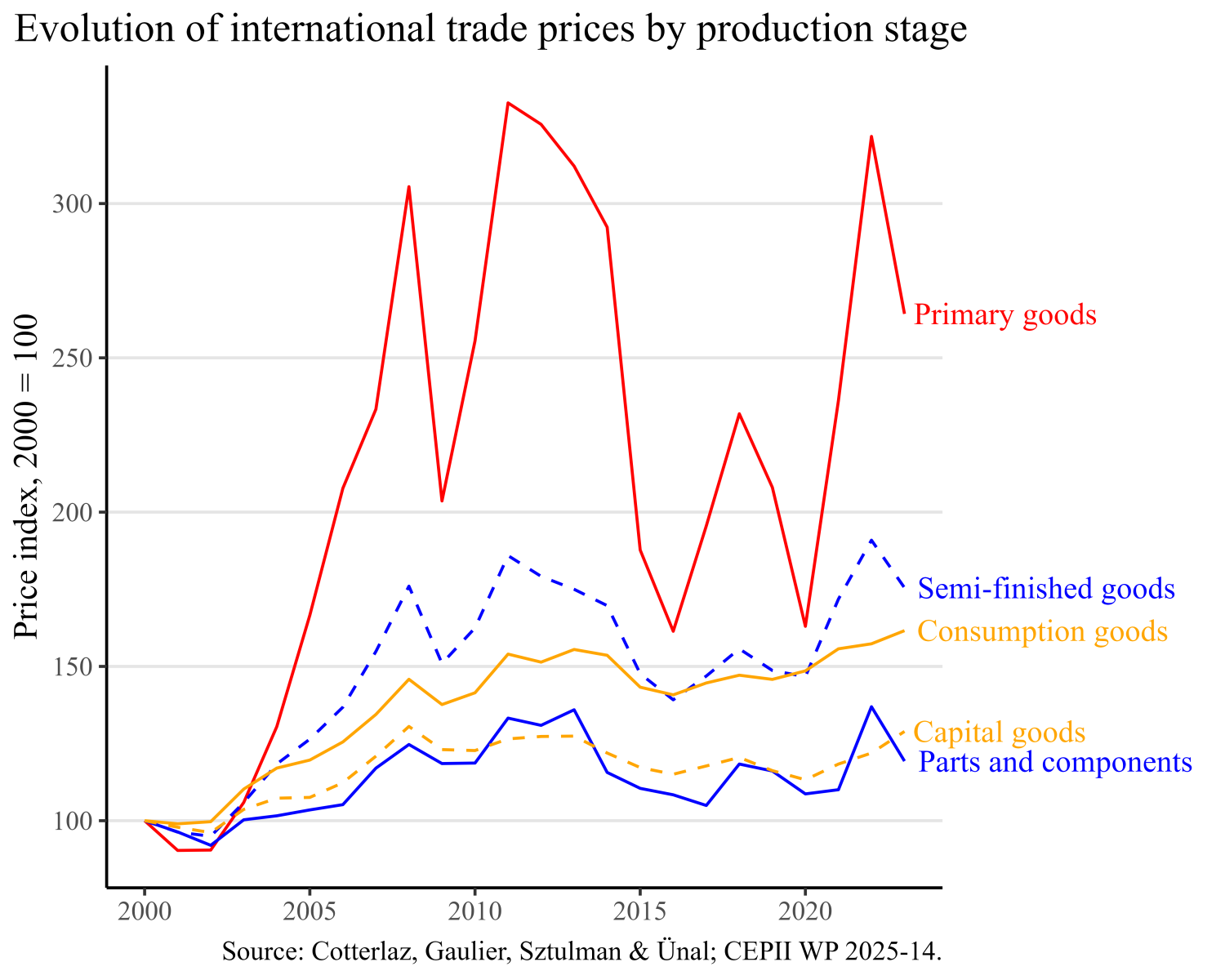
Dynamics of World Trade: A Question of Prices?
Behind the expansion or slowdown of world trade in value terms lies a key factor: price movements, which are often sharply contrasted across categories of traded goods.
By Pierre Cotterlaz, Guillaume Gaulier, Aude Sztulman, Deniz Ünal
Prices matter when measuring the evolution of global trade: expressed in nominal terms, world merchandise trade more than tripled between 2000 and 2023, whereas in real terms—adjusted for price changes—it “only” doubled. Prices increased by a factor of 1.6, an average rise that conceals highly heterogeneous dynamics across stages of production, from raw materials to finished products.
The prices of primary goods stand out for their high volatility, part of which is transmitted to semi-finished intermediate products: the prices of the latter closely follow those of primary commodities, though with a smaller amplitude. Parts and components (the other category of intermediate goods) are likewise influenced by commodity price cycles, but their fluctuations are more muted. By contrast, final goods exhibit more stable prices, only weakly correlated with those of primary commodities; on average, consumer goods have experienced stronger price increases than capital goods.
Further reading: International Trade by Production Stage: What’s Real?
< Back


